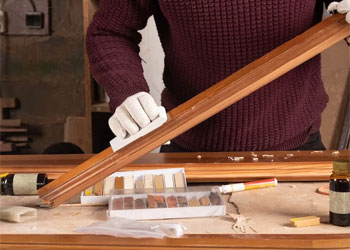Wood has captivated architecture and interior design for decades. It is nearly impossible to discover a house that was built without the use of wood! While interior design trends come and go, hardwood furniture stands the test of time. But do you know what kind of wood is used in the interiors of your house? Most homeowners need to be made aware of the benefits of wood items and therefore pay huge amounts for furniture.
Here is a detailed guide to help you make an informed decision when choosing the best wood material for your home.
solid wood
Using solid wood for furniture, flooring, and other purposes is costly. These objects, on the other hand, are of good quality, structurally sound, and will last a lifetime. If you want to buy some lovely natural wood furniture for your home, you can save money by looking in second-hand stores.
Solid wood types
The two main types of solid wood are hardwoods and softwoods. Hardwoods are often generated from flowering trees like mahogany, teak, oak, or walnut, whilst softwoods are sourced from coniferous plants like pine and deodar. Hardwoods grow more slowly and densely than softwoods. Softwoods have a smoother feel and a lighter grain, whereas hardwoods have a coarser texture and a more obvious, identifiable natural grain.
Pros of solid wood material
Solid wood furniture is highly recommended because it can be easily polished or repaired and will last a lifetime.
Solid wood does not emit harmful gases and has a high resale value.
The various grains and knots in solid wood give it an unmistakable one-of-a-kind look.
Cons of solid wood material
It costs more than synthetic wood.
Because hardwoods are denser, they may be difficult to cut.
While many varieties of solid wood are resistant to moisture and weather, there is still a risk of being vulnerable to the elements.
engineered wood
Engineered/manufactured wood is created by binding or joining the strands, particles, fibers, and other wood components with adhesives or other techniques to create a composite material. The many engineered wood products are discussed here, along with their characteristics and applications.
Plywood wood
Plywood is a wood product made by cross-laminating thin sheets of wood veneers and combining them with moisture-resistant adhesives under heat and pressure.
Pros of Plywood
Because it is weather-resistant, plywood does not easily bend, warp, or split.
Plywood is also strong enough to hold screws and nails and flexible enough to bend for curved surfaces.
Cons of Plywood
formaldehyde-containing compounds in plywood can be harmful.
The finished product must be coated with veneers, laminates, or paints, which increases the cost.
Uses
The strong material, which comes in a variety of thicknesses, can be used for a variety of applications such as furniture, doors, wall and ceiling panels, flooring, closets, handrails, and kitchen accessories. For outdoor projects and use in wet places such as restrooms, choose BWR (boiling water resistant) or Marine plywood. Because they are made with no gaps or hollows, they are resistant to water and insects.
MDF, or medium-density fiberboard,
MDF boards are created by mixing wood fibers, wax, and a resin binder, then manufacturing panels at high temperatures and pressure.
Pros of MDF
It is an affordably priced alternative that is easy to work with because it allows for drilling and cutting.
It can also be treated to protect it from pests.
Cons of MDF
MDF collapses without support and is unsuitable for making shelves or heavy-duty surfaces. Because it collects water over time and is not suited for damp areas such as the outdoors or restrooms.
Components such as screws can fall out due to rough wear.
MDF boards include chemicals like VOCs (volatile organic compounds), which can emit harmful vapors while cut and sanded.
Uses
MDF is commonly used to make furniture such as closets, beds, and desks that are finished with a veneer, paint, or laminate. It’s ideal for carefully crafted ornamental panels and partitions, as well as ceiling and wall claddings.
Particle Board
The particle board is comparable to MDF. Wood chips, sawdust, and synthetic resin can be mixed together and pressed into sheets to make it.
Pros of Particleboard
This wood material is affordable.
With the correct treatments, particle boards can be made water and pest-resistant.
cons of Particleboard
It is not as tough as MDF and should not be used for heavy-duty uses.
It absorbs moisture and is not suitable for securely holding screws.
If not supported, it also produces methanol and weakens over time.
Uses
Particle board wood’s principal applications include sturdy structural structure countertops, an underlying layer for cabinet doors, and ornamental features such as window and door trims and ceiling moldings.
From flooring to cabinetry to furniture, wood has lots of benefits for use in the home. So, if you’re planning a wood-related restoration or design job, it could be a good idea to become familiar with the wide range of species available so you know exactly what to look for (and what to avoid). lastly, choose wisely.
happy home!

